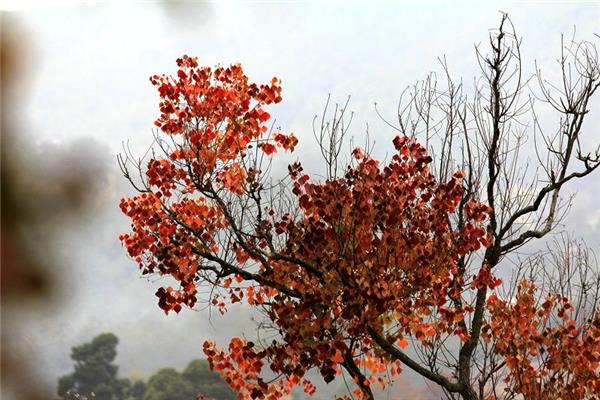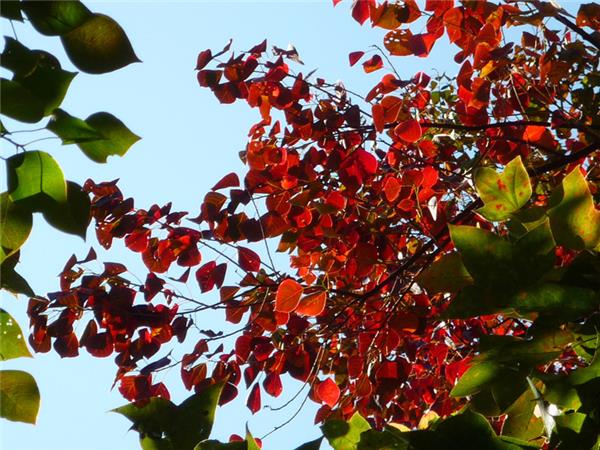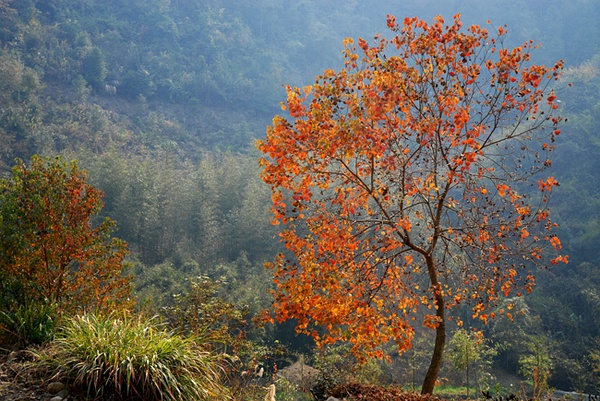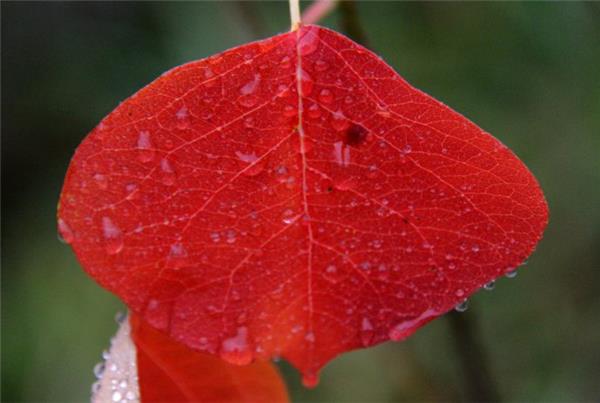Introduction to the cultivation techniques and construction methods of Sapium sebiferum
Sapium sebiferum is a kind of tree species that likes light, so when raising it, you must choose a spacious and bright place for it, and then take care of it carefully.

Cultivation techniques of Sapium sebiferum
Habits: tropical light-loving tree species. Like light, not tolerant of shade, have a certain ability to resist wind. Resistant to summer heat and low cold resistance. Growth stagnates when the temperature is below 15 degrees Celsius; when the temperature persists at 5 degrees Celsius, the plant is seriously damaged. Like high temperature, high humidity and deep, fertile and rich water supply of slightly acidic soil. It is not strict with soil and can grow in sandy soil, clay soil and gravelly loam. It can also adapt to acid soil and soil with salt content less than 0.25%, it is more resistant to drought and slightly resistant to water and moisture, and the soil with medium fertility can grow normally. But too dry and barren land is not suitable for planting.
Reproduction: mainly propagate by cutting. At the end of March, when the temperature is stable above 20 degrees Celsius, cut off the half-year-old to annual twigs, cut them into about 14 centimeters long to make cuttings, and soak the lower end of the cuttings in clean water for several hours to make the white milk flow clean at the cut, so as to prevent it from cementing and affecting the hairy roots. After soaking, the cuttings were inserted into a wet sand bed with a small amount of calcium superphosphate. In full light spray moisturizing, about 3 can root, about a month and a half can be moved into the field to cultivate. Dilute nitrogen fertilizer was applied in seedling stage for 5 times, and fertilizer was stopped after autumn, and frost prevention was paid attention to after winter. One-year-old seedlings can be planted in the nursery.

Water and fertilizer: fertilizer is applied once a month in the four months from July to October. Fertilizers should be urea and other nitrogen fertilizers, 20 kg per mu each time. It can also be sprayed once with 0.2% potassium dihydrogen phosphate 800 times. It is best to keep spraying every 10 days or so. To ensure an adequate supply of nutrients. In July, August and October, water should be drenched after fertilization to dissolve the fertilizer and promote absorption. However, stop spraying water after fertilization in September in order to improve the Lignification degree of seedlings and enhance the cold resistance of seedlings, which is conducive to the winter of seedlings.
Pest control: pest control in the fast-growing period of seedlings is also important. The pests that appeared in this period were inchworm, yellow poison moth, diamondback moth, silkworm, willow orchid leaf beetle, big coir moth and so on. All these pests can be feathered. They harm the leaves and cause mutilated leaves. Reduce the photosynthetic ability of seedlings. The methods of prevention against these pests are all the same. We had better adopt the method of comprehensive control, install insecticidal lights in the nursery, and turn on the lights to trap and kill adults at night. When the larvae are found, we should also take the method of chemical control and spray the seedling leaves with 0.5% azadirachtin EC or 2000 to 2500 times of thiazuron 3 suspension.

Matters needing attention in pruning Sapium sebiferum
The main results are as follows: 1. The cut of the pruned branch should be smooth, with the cut bud at an angle of 45 degrees, cut from the opposite side of the cut, the top of the slope is flat with the tip of the cut bud, and the lowest part of the slope is flat with the bud base, so that the cut wound surface is small, easy to heal, and the bud grows fast after germination. The cut of the sparse branch is cut off at the branch point, which is flat with the dry, leaving no residual pile. The branches of tufted shrubs are level with the ground. The direction and quality of cutting buds determine the growth direction of new shoots and branches.
2. When pruning larger branches and trunks, the step-by-step method can be used. First, at a distance of 20 cm above the required saw, all the openings are sawed from the lower direction of the branch, with a depth of half the thickness of the branch, and the branch is sawed off from the top, leaving a residual pile, and then the residual pile is sawed off from the saw, which can avoid branch wall cracking.
3. Tools should be kept sharp during pruning, tree-climbing machines and folding ladders should be kept. Before use, each part should be checked for flexibility and looseness to prevent accidents. Go up the tree and fasten the safety rope. When working near the high-voltage line, you should pay special attention to safety and avoid electric shock. If necessary, please cooperate with the power supply department.

Red leaf Sapium sebiferum is similar to red maple from a distance, but the difference between them can be seen from a close view. First of all, the leaf shape is different, but the visual enjoyment brought by the two is equal, and they are both very good landscape tree species.
Related
- Wuhan Hospital Iron Tree Blooming Result Was Instantly Frightened by the Gardener Master
- Which variety of camellia is the most fragrant and best? Which one do you like best?
- What is the small blue coat, the breeding methods and matters needing attention of the succulent plant
- Dormancy time and maintenance management of succulent plants during dormancy
- Minas succulent how to raise, Minas succulent plant pictures
- What are the varieties of winter succulent plants
- How to raise succulent plants in twelve rolls? let's take a look at some experience of breeding twelve rolls.
- Attention should be paid to water control for succulent plants during dormant period (winter and summer)
- Watering experience of twelve rolls of succulent plants
- Techniques for fertilizing succulent plants. An article will let you know how to fertilize succulent plants.



